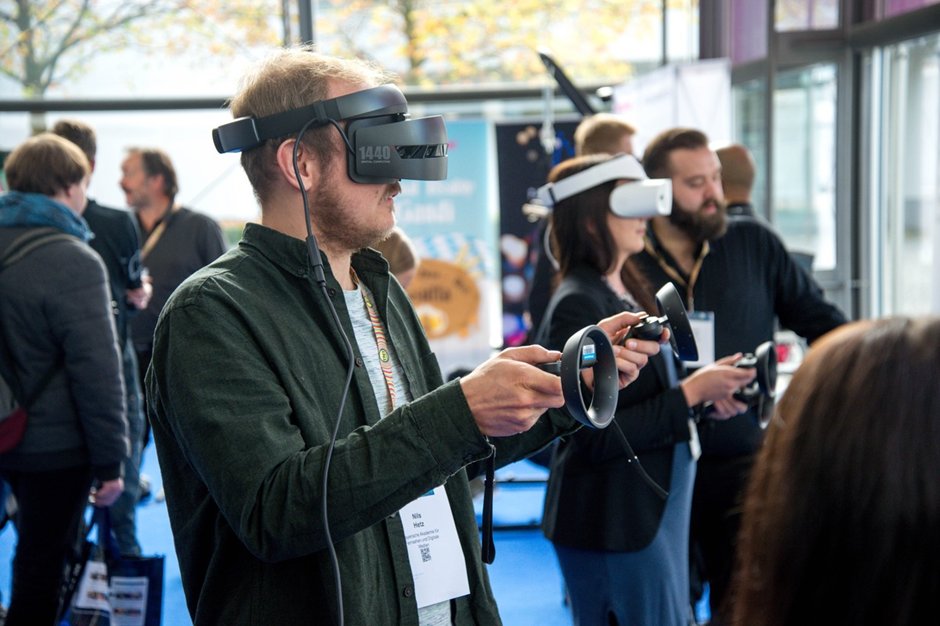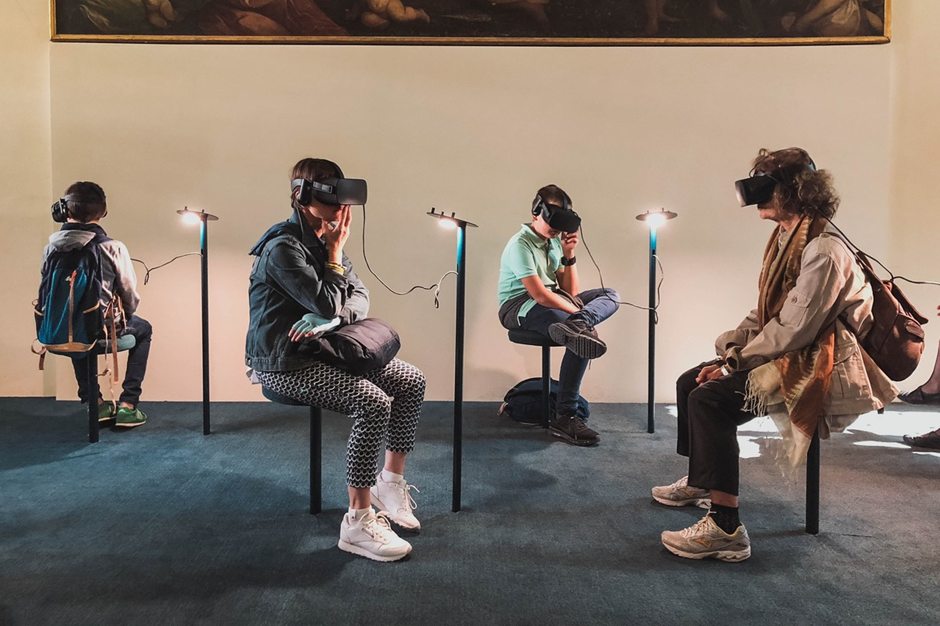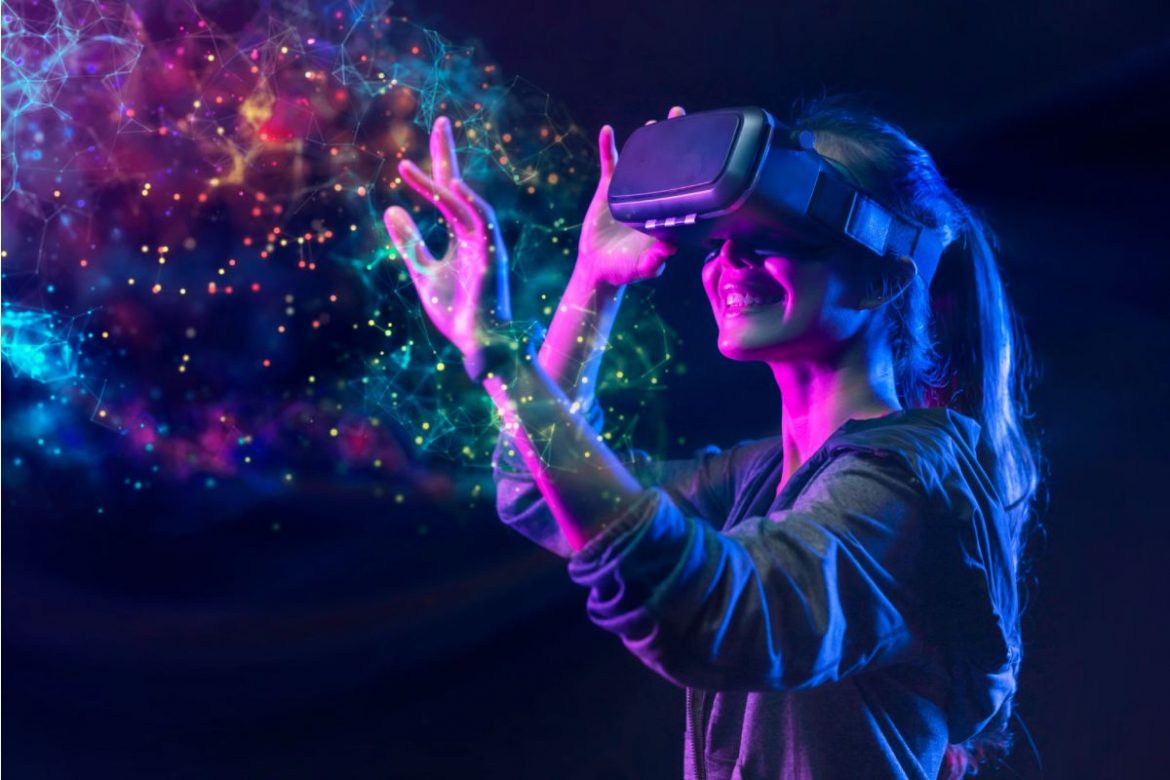VR App Development with Unity: Best Practices and Use Cases – Despite VR becoming a crucial part of the business world, not every company uses this cutting-edge technology. As a result, products and services based on virtual reality have become a distinguishing feature of market leaders. Naturally, entrepreneurs motivated by reaching top positions have the development of custom VR apps on their agenda.
If you are considering building your VR application, it’s better to know its prospects and the best ways for project realization. Thus, let’s explore one of the most popular software for creating immersive experiences — the Unity engine. This article will tell you about the types of apps you can make with Unity and give you 5 helpful tips on improving the development process.

Table of Contents
What Kinds of VR App Can Be Made with Unity
Although Unity is a game engine in the first place, it still has decent functionality to make a VR app for any purpose and platform. So, let’s take a look at the 5 popular kinds of applications for different industries you can make with Unity.
Corporate Training VR App
Employee training is integral for companies in any industry since each specialist should get through the workplace learning cycle, from onboarding to level-up qualification. However, this process can be pretty resource-spending as it takes to hire instructors, distract employees from their work, as well as organize effective and fruitful training.
Luckily, a custom VR application solves all of the mentioned issues. With virtual reality, specialists can train individually at any appropriate time under the supervision of a digital instructor. In addition, immersive training is completely safe, allowing less risk for representatives of dangerous professions such as firemen, constructors, etc.
VR for Engineering
Computer solutions replaced paperwork a long time ago. This also affected the field of engineering. Nowadays, specialists in constructing complex mechanisms, objects of civil infrastructure, and the like create prototypes of projects in the virtual world with the help of particular functionality and 3D modeling capabilities.
As a result, cost spending on real-world materials is reduced, while the visualization and project design quality is increased. In addition, a custom VR engineering app can have testing capabilities, allowing specialists to check the practicality of a design before reproducing it in real life.
VR App for E-commerce
Online shopping is a part of our daily life, so we are already used to purchasing goods on websites and mobile applications. Yet, virtual reality opens new perspectives for business owners as well as clients. Technology-oriented brands can provide their customers with the ultimate shopping experience, transferring their shops into VR applications and metaverses.
In more detail, people can go shopping, try on clothes, and even customize different products with 3D configurators in a virtual world while staying at home. This solution is a superior customer service solution ensuring that clients don’t waste their precious time on the way to a shopping mall, waiting in lines at cash desks and changing rooms.
VR Entertainment
The entertainment industry is one of the largest in the world. For instance, the global entertainment and media market will reach $3.5m by 2028, according to GlobeNewswire. Thus, companies working on VR entertainment experiences have plenty to offer to different audience types.
In virtual reality, users can play games, chat with friends/random people, go on trips, and attend concerts, museums, and even amusement parks. All of these digital entertainments can be produced as VR apps now. Yet, since the metaverse is hitting the ground running, people will be able to have fun in a virtual world of the new level, where everything is connected like in the real one.
VR for Healthcare
Surprisingly, even the healthcare industry is going digital, just like many others do. With VR capabilities, patients can get some kinds of treatment at home. For example, thanks to the hand rehabilitation VR training app developed by Program-Ace, it’s easier for patients with hand movement issues to train the mobility of their hands without leaving their homes. Thus, there’s no need for them to visit hospitals while a virtual instructor supervises the sessions and tracks the progress.
At the same time, medics can educate in virtual reality. With a custom app, medical students can explore the human body from the inside through 3D virtual tours. In addition, they can practice surgeries in virtual operating rooms, guided by visual/audio hints. According to the learning pyramid, students absorb information better while gaining practical skills.

5 Tips to Make the Development Experience Better
The VR app development pipeline in Unity is pretty standard. Starting with the pre-production phase, you should gain information, analyze the market, and make a prototype. Further, 3D modeling, animation, and coding take place. And finally, your app should be tested before and after the launch. So, you’re welcome to explore some best practices, they are;
- Explore the documentation. Unity provides its users with a broad documentation base consisting of guides and manuals on different development stages. Thus, specialists don’t need to waste time figuring out how to deal with a particular task and searching for information on the internet.
- Don’t start from scratch. Building a VR application may take a while, so it’s better to save some time when you have an opportunity. With Unity pre-ready materials, developers can set up an appropriate environment for several minutes. In addition, 3D artists can use ready-made visual content, customize it and implement it in your app.
- Avoid using third-party platforms. There are several decent pieces of software for visual content creation allowing for high-quality modeling, texturing, animation, etc., which some specialists may get used to working with. However, the effort and extra time spent exporting, importing, and implementing content from third-party software to Unity are usually not worth it. So, it’s better to perform all the work in one engine.
- Setup LOD according to the camera’s distance. Balancing high-quality graphics, their level of detail, and optimal content size is an eternal challenge of any app development process. So, in order not to take space when it’s unnecessary, specialists can set up reducing the LOD of objects while the camera zooms out. Thus, users will see detail only from close-up, and when the models go into background mode, with less space.
- Draw experienced specialists to your project. The experience and qualification of specialists are vital for such complex VR projects. So, if you don’t have an in-house team, you can hire a reliable VR app development company that will use its resources so that your app meets your business needs.
In Conclusion
Progress never stops, and so entrepreneurs shouldn’t. Nowadays, building a VR application for your company is preparing a foundation for the business of the future. Accordingly, those companies keeping up with the times have more prospects for success in the world of metaverse and remote services. Moreover, by starting this path with Unity now, you’ll be able to create stunning solutions for any industry and save resources in the long run.


